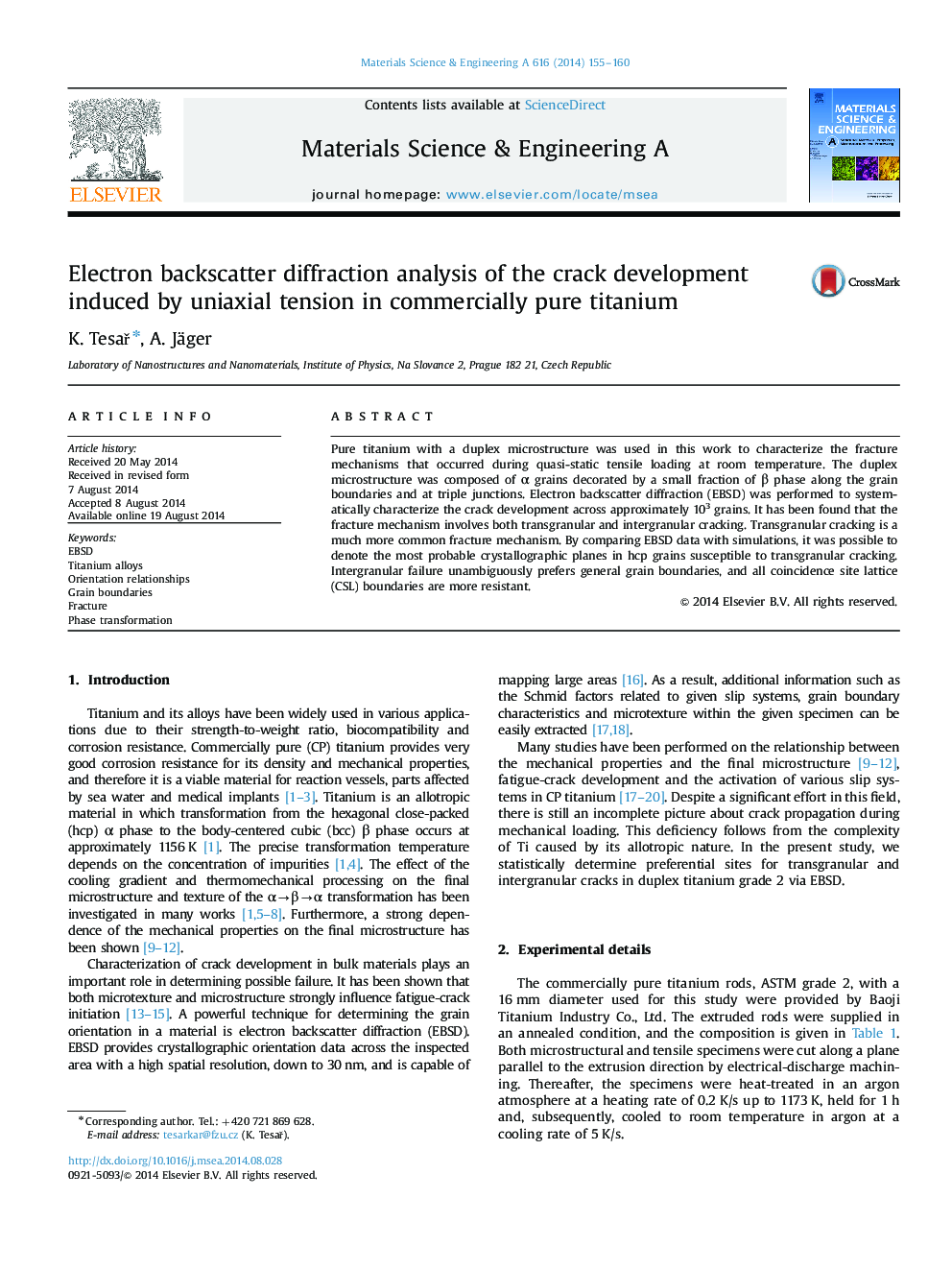| Article ID | Journal | Published Year | Pages | File Type |
|---|---|---|---|---|
| 1574810 | Materials Science and Engineering: A | 2014 | 6 Pages |
Abstract
Pure titanium with a duplex microstructure was used in this work to characterize the fracture mechanisms that occurred during quasi-static tensile loading at room temperature. The duplex microstructure was composed of α grains decorated by a small fraction of β phase along the grain boundaries and at triple junctions. Electron backscatter diffraction (EBSD) was performed to systematically characterize the crack development across approximately 103 grains. It has been found that the fracture mechanism involves both transgranular and intergranular cracking. Transgranular cracking is a much more common fracture mechanism. By comparing EBSD data with simulations, it was possible to denote the most probable crystallographic planes in hcp grains susceptible to transgranular cracking. Intergranular failure unambiguously prefers general grain boundaries, and all coincidence site lattice (CSL) boundaries are more resistant.
Related Topics
Physical Sciences and Engineering
Materials Science
Materials Science (General)
Authors
K. TesaÅ, A. Jäger,
